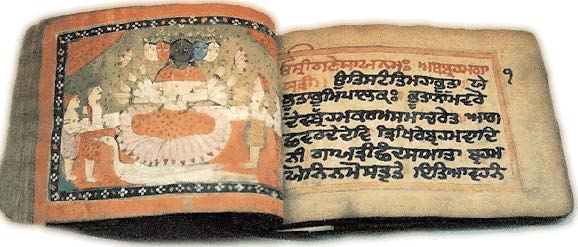
According to the brahma form of marriage, the girl must not have had her menarche. There is incontrovertible proof for this in the Vedic mantra chanted at the end of the marriage rite. . I told that a girl is under the sway of a gandharva between the time she is able to wear her clothes without anybody’s help and her menarche. His name is Visvavasu. The mantra I referred to is chanted by the groom addressing this demigod. “O Visvasu,” it says,”I bow to you. Leave this girl and go. Go to another girl child.
Have I not become the husband of this girl? So give her over to me and go to another girl who is not married and lives with her father. “During the wedding the groom performs a puja to this gandharva and prays to him to free the girl from his control. Here is proof that the bride is not under Agni and has not had her menarche. The question now is about the verse (from the Manusmrti) cited by the reformists. According to it, a girl may wait three years after her menarche and then seek her husband on her own.
There is an answer to this. The general rule according to the dharmasastras is that a girl must be married before she attains puberty: “Pradanam prak rtoh.” What happens if this injunction is not followed? If groom does not come on his own, seeking the girl’s hand, her father or brother must look for a groom and marry her off. But if they turn out to be irresponsible or otherwise fail to find a groom? Or if the girl has no guardian, no one to care for her? The lines quoted by the reformers from the Manusmrti apply to such a girl.
She may look for a husband on her if none of her relatives, neighbours or well-wishers take the trouble of finding her a groom even after she has attained puberty. Though the reformists quote from the Vedas and sastras in support of their view, they fail to take into account the context in which the relevant passages occur. They see them in isolation. That is why they keep arguing that the customs followed by people steeped in our traditions are contrary to the sastras.
In the Chandogya Upanisad there is mention of a sage called Cakrayana Usasti whose wife had not come of age. The reformists do not examine such references in our ancient texts with a cool head but are carried away by their emotions. In the past the common people did not know how to counter the arguments of the reformists. Even so they did not accept their views thinking it best to follow the practices of their elders, of great men.
That is why the bill brought twice by the Rt Hon’ble Srinivasa sastri before the legislative council to amend the marriage act (with reference to the age of marriage) did not receive enough support. Later (Harbilas) Sarda introduced the bill which [on its passage] came to be called the Sarda Act. Many people (in the South) think Sarda was a woman and call the law named after him the “Sarda Act”.
The Central legislative assembly was equally divided on the bill — 50 percent for and 50 per cent against. Then the British asked one of the nominated members to vote in favour of the bill; and thus the minimum age of marriage for girls was raised by a legal enactment. The bill was passed not on the strength of public opinion but because if the government’s intervention. The mind of our British rulers worked thus: “The Congress has been demanding svaraj but we have refused to grant it.
Let us give it some satisfaction by being of help in inflicting an injury on the (Hindu) religion. ” Now things have changed. There is no respect any longer for old customs and traditions. When the Sarda Act came into force in British India, some Sanskrit scholars returned the “Mahamahopadhyaya” title conferred on them by the government. Among them were Pancanana Tarkaratna Bhattacarya of Bengal and Laksmana Sastri Dravid.
The latter was settled in Kasi and had the “Dravid” tagged on to his name to make it known that he belonged to the land of the Tamils. How many people today are inspired to rise in protest against the changes introduced by our government in our sastric observances. Our children must be taught the substance and meaning of the sastras in a comprehensive manner. To speak to them about one aspect here and another there will lead to a haphazard and confused view.
The half-baked research carried on in the Vedas has given rise to the opinion that the scriptures favour love marriage. The canonical texts must be seen in their entirety. When a subject is examined, its underlying meaning and purpose must be grasped. Also they must be seen in the light of other relevant passages occurring elsewhere. A conclusion must be arrived at only after a thorough inquiry into all points.
The brahma marriage is for all castes. Other forms of marriage are also permitted for non- Brahmins, also postpuberty marriage. If the idea is to give importance to carnal pleasure these other forms may be permitted. But brahma is the best if the purpose of the marriage samskara is the advancement of the Self.





Be the first to comment